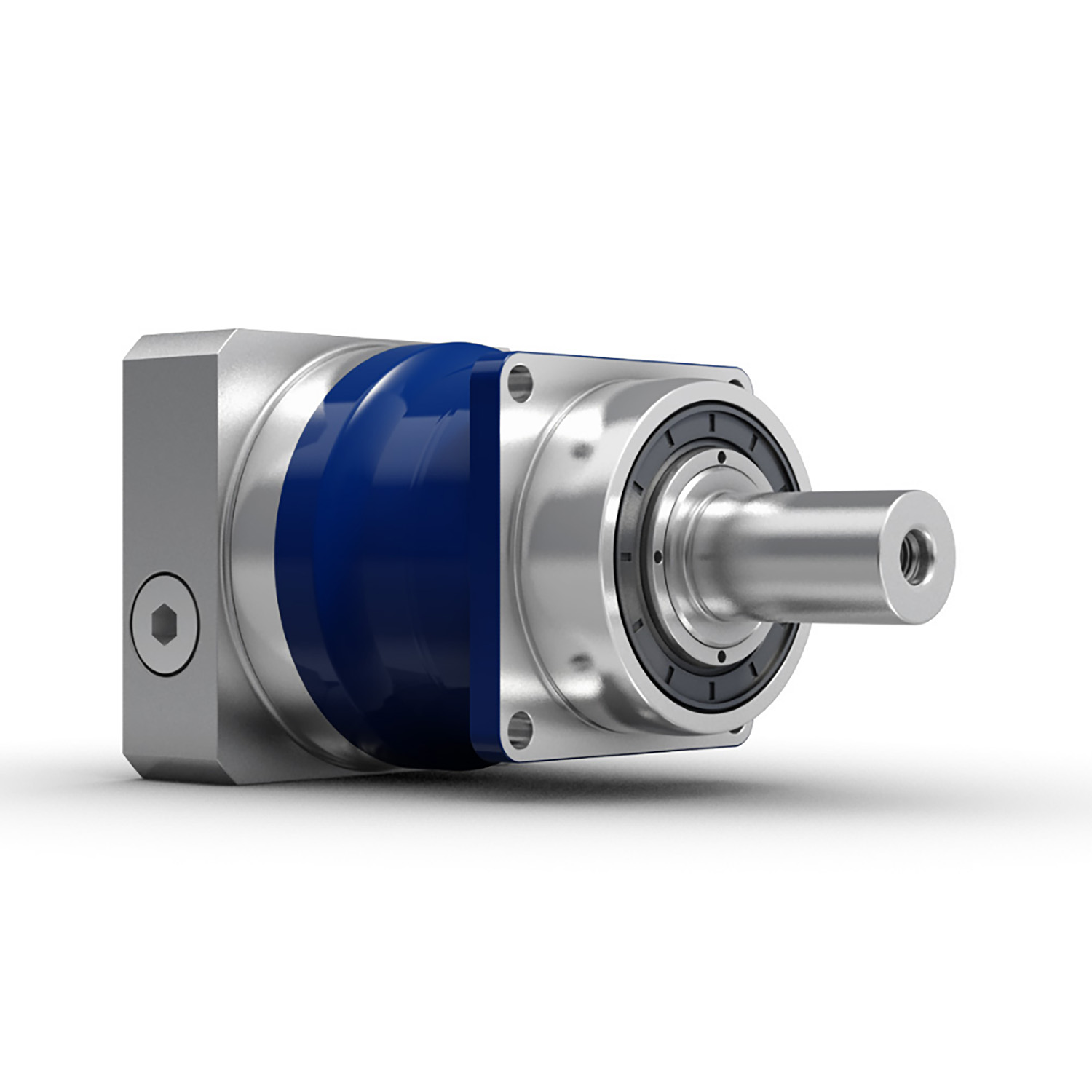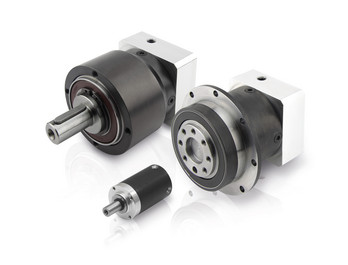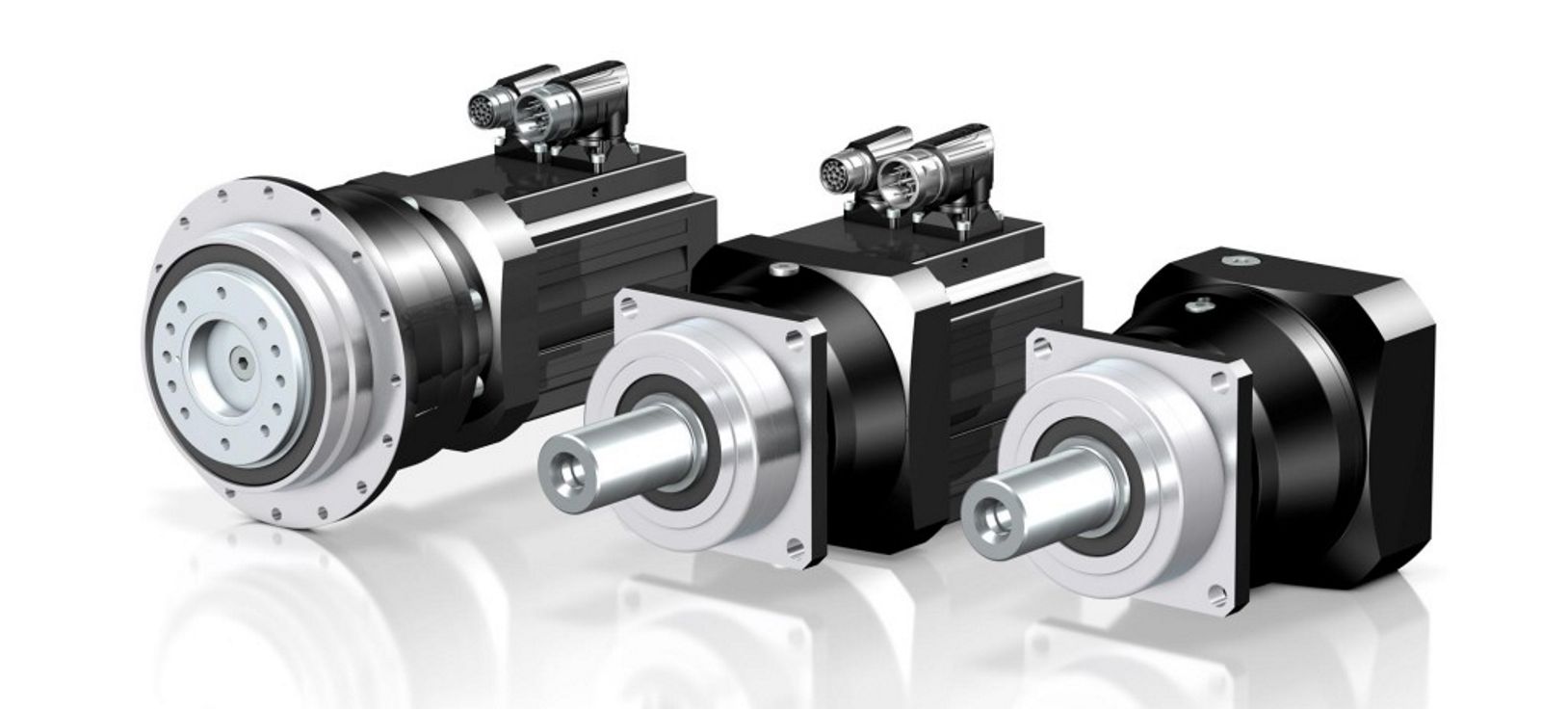Product Description
Ratio 25:1 High Rigidity Servo Motor Helical Planetary Reducer Gearbox
The high-precision planetary gearbox adopts helical gear design, and is used in various control transmission fields with servo motors, such as precision machine tools, laser cutting equipment, battery processing equipment, etc. It has the advantages of large torsional rigidity and large output torque.
Product Description
Description:
(1).The output shaft is made of large size,large span double bearing design,output shaft and planetary arm bracket as a whole.The input shaft is placed directly on the planet arm bracket to ensure that the reducer has high operating accuracy and maximum torsional rigidity.
(2).Shell and the inner ring gear used integrated design,quenching and tempering after the processing of the teeth so that it can achieve high torque,high precision,high wear resistance.Moreover surface nickel-plated anti-rust treatment,so that its corrosion resistance greatly enhanced.(3).The planetary gear transmission employs full needle roller without retainer to increase the contact surface,which greatly upgrades structural rigidity and service life.
(4).The gear is made of Japanese imported material.After the metal cutting process,the vacuum carburizing heat treatment to 58-62HRC. And then by the hobbing,Get the best tooth shape,tooth direction,to ensure that the gear of high precision and good impact toughness.
(5).Input shaft and sun gear integrated structure,in order to improve the operation accuracy of the reducer.
Product Parameters
1.One-piece construction,High Precision and large output torque.
2.Double bracing cage planetary shelf structure.high reliable. Can suit reversible rotation frequently
3.Helical gear transmission, more reliable. Higher torque.
4.Low return backlash, high precision.
5.Special Rotation frame structure.can carry bigger Radial&Axial load
| Specifications | PX42 | PX60 | PX90 | PX120 | PX140 | PX180 | |||
| Technal Parameters | |||||||||
| Max. Torque | Nm | 1.5times rated torque | |||||||
| Emergency Stop Torque | Nm | 2.5times rated torque | |||||||
| Max. Radial Load | N | 780 | 1530 | 3250 | 6700 | 9400 | 14500 | ||
| Max. Axial Load | N | 390 | 630 | 1300 | 3000 | 4700 | 7250 | ||
| Torsional Rigidity | Nm/arcmin | 2.5 | 6 | 12 | 23 | 47 | 130 | ||
| Max.Input Speed | rpm | 8000 | 8000 | 8000 | 8000 | 6000 | 6000 | ||
| Rated Input Speed | rpm | 4000 | 4000 | 3000 | 3000 | 3000 | 3000 | ||
| Noise | dB | ≤56 | ≤58 | ≤60 | ≤65 | ≤68 | ≤68 | ||
| Average Life Time | h | 20000 | |||||||
| Efficiency Of Full Load | % | L1≥95% L2≥90% | |||||||
| Return Backlash | P1 | L1 | arcmin | / | ≤3 | ≤3 | ≤3 | ≤3 | ≤3 |
| L2 | arcmin | / | ≤5 | ≤5 | ≤5 | ≤5 | ≤5 | ||
| P2 | L1 | arcmin | ≤5 | ≤5 | ≤5 | ≤5 | ≤5 | ≤5 | |
| L2 | arcmin | ≤7 | ≤7 | ≤7 | ≤7 | ≤7 | ≤7 | ||
| Moment Of Inertia Table | L1 | 3 | Kg*cm2 | / | 0.16 | 0.61 | 3.25 | 9.21 | 28.98 |
| 4 | Kg*cm2 | 0.03 | 0.14 | 0.48 | 2.74 | 7.54 | 23.67 | ||
| 5 | Kg*cm2 | 0.03 | 0.13 | 0.47 | 2.71 | 7.42 | 23.29 | ||
| 7 | Kg*cm2 | 0.03 | 0.13 | 0.45 | 2.62 | 7.14 | 22.48 | ||
| 8 | Kg*cm2 | 0.03 | 0.13 | 0.45 | 2.6 | / | / | ||
| 10 | Kg*cm2 | 0.03 | 0.13 | 0.4 | 2.57 | 7.03 | 22.51 | ||
| L2 | 12 | Kg*cm2 | / | 0.13 | 0.45 | 0.45 | 2.63 | 7.3 | |
| 15 | Kg*cm2 | / | 0.13 | 0.45 | 0.45 | 2.63 | 7.3 | ||
| 20 | Kg*cm2 | 0.03 | 0.13 | 0.45 | 0.45 | 2.63 | 7.3 | ||
| 25 | Kg*cm2 | 0.03 | 0.13 | 0.45 | 0.4 | 2.63 | 7.3 | ||
| 28 | Kg*cm2 | 0.03 | 0.13 | 0.45 | 0.45 | 2.43 | 7.1 | ||
| 30 | Kg*cm2 | / | 0.13 | 0.45 | 0.45 | 2.43 | 6.92 | ||
| 35 | Kg*cm2 | 0.03 | 0.13 | 0.4 | 0.4 | 2.43 | 7.1 | ||
| 40 | Kg*cm2 | 0.03 | 0.13 | 0.45 | 0.45 | 2.43 | 6.92 | ||
| 50 | Kg*cm2 | 0.03 | 0.13 | 0.4 | 0.4 | 2.39 | 6.92 | ||
| 70 | Kg*cm2 | 0.03 | 0.13 | 0.4 | 0.4 | 2.39 | 6.72 | ||
| 100 | Kg*cm2 | 0.03 | 0.13 | 0.4 | 0.4 | 2.39 | 6.72 | ||
| Technical Parameter | Level | Ratio | PX42 | PX60 | PX90 | PX120 | PX140 | PX180 | |
| Rated Torque | L1 | 3 | Nm | / | 40 | 105 | 165 | 360 | 880 |
| 4 | Nm | 17 | 45 | 130 | 230 | 480 | 880 | ||
| 5 | Nm | 15 | 45 | 130 | 230 | 480 | 1100 | ||
| 7 | Nm | 12 | 45 | 100 | 220 | 480 | 1100 | ||
| 8 | Nm | / | 40 | 90 | 200 | / | / | ||
| 10 | Nm | 10 | 30 | 75 | 175 | 360 | 770 | ||
| L2 | 12 | Nm | / | 40 | 105 | 165 | 440 | 880 | |
| 15 | Nm | / | 40 | 105 | 165 | 360 | 880 | ||
| 20 | Nm | 17 | 45 | 130 | 230 | 480 | 880 | ||
| 25 | Nm | 15 | 45 | 130 | 230 | 480 | 880 | ||
| 28 | Nm | 17 | 45 | 130 | 230 | 480 | 1100 | ||
| 30 | Nm | / | 40 | 105 | 165 | 480 | 1100 | ||
| 35 | Nm | 10 | 30 | 130 | 230 | 480 | 1100 | ||
| 40 | Nm | 17 | 45 | 130 | 230 | 480 | 1100 | ||
| 50 | Nm | 15 | 45 | 130 | 230 | 480 | 1100 | ||
| 70 | Nm | 12 | 45 | 100 | 220 | 480 | 1100 | ||
| 100 | Nm | 10 | 30 | 75 | 175 | 360 | 770 | ||
| Degree Of Protection | IP65 | ||||||||
| Operation Temprature | ºC | - 10ºC to -90ºC | |||||||
| Weight | L1 | kg | 0.5 | 1.25 | 3.75 | 8.5 | 16 | 28.5 | |
| L2 | kg | 0.8 | 1.75 | 5.1 | 12 | 21.5 | 40 | ||
Company Profile
Packaging & Shipping
1. Lead time: 10-15 days as usual, 30 days in busy season, it will be based on the detailed order quantity;
2. Delivery: DHL/ UPS/ FEDEX/ EMS/ TNT
/* March 10, 2571 17:59:20 */!function(){function s(e,r){var a,o={};try{e&&e.split(",").forEach(function(e,t){e&&(a=e.match(/(.*?):(.*)$/))&&1
| Application: | Universal, Industrial, Household Appliances, Automation Equipment |
|---|---|
| Operating Speed: | Low Speed |
| Excitation Mode: | Excited |
| Function: | Driving |
| Casing Protection: | Closed Type |
| Type: | Planetary Gear Reducer |
| Samples: |
US$ 181/Piece
1 Piece(Min.Order) | |
|---|
| Customization: |
Available
| Customized Request |
|---|

Compatibility of Servo Gearbox with a Specific Motor
The compatibility between a servo gearbox and a specific motor depends on several key factors:
1. Mounting Configuration: The mounting interface of the servo gearbox and motor must be compatible. This includes the type of coupling, flange size, and bolt pattern. Proper alignment ensures efficient power transmission and minimizes mechanical stress.
2. Shaft Diameter and Keyway: The diameter and keyway of the motor shaft must match the input shaft of the servo gearbox. A precise fit prevents slippage and ensures accurate torque transmission.
3. Torque and Speed Ratings: The torque and speed requirements of the application should align with the torque and speed ratings of both the motor and gearbox. Oversizing or undersizing either component can lead to inefficient operation and premature wear.
4. Inertia Matching: Inertia matching between the motor and gearbox helps prevent resonance and oscillations in the system. An appropriate inertia match ensures smooth and precise motion control.
5. Backlash and Stiffness: The gearbox's backlash (play in the gears) and stiffness characteristics should match the application's requirements. Low backlash and high stiffness are crucial for accurate positioning tasks.
6. Efficiency and Heat Dissipation: The combined efficiency of the motor and gearbox affects the overall system efficiency. Inadequate efficiency can lead to energy losses and excessive heat generation.
7. Service Life and Maintenance: Compatibility also involves considering the expected service life and maintenance requirements. A well-matched motor-gearbox combination enhances the durability and reliability of the motion control system.
8. Control and Feedback: The control system's capabilities, such as closed-loop control and feedback devices, play a role in determining compatibility. The motor and gearbox should provide the necessary interfaces for effective integration into the control system.
Manufacturers and engineers often provide guidelines and compatibility charts to assist in selecting the right servo gearbox for a specific motor. Considering these factors ensures optimal performance, efficiency, and longevity of the motion control system.

Disadvantages and Limitations of Using Servo Gear Systems
Servo gear systems offer numerous benefits for precise motion control, but they also come with certain disadvantages and limitations:
1. Cost: Servo gear systems can be more expensive than traditional gearbox solutions. The combination of high-precision components, advanced electronics, and closed-loop control mechanisms can result in higher upfront costs.
2. Complexity: Servo gear systems are complex, requiring expertise in programming, tuning, and integrating the components. Setting up and fine-tuning the system can be time-consuming, especially for applications with intricate motion profiles.
3. Maintenance: The complex nature of servo gear systems can lead to increased maintenance requirements. Regular maintenance, including calibration and monitoring of sensors, is essential to ensure optimal performance and accuracy.
4. Sensitivity to Environmental Factors: Servo systems can be sensitive to environmental conditions such as temperature, humidity, and vibration. Extreme variations in these factors can impact the system's performance and accuracy.
5. Power Consumption: Servo systems can consume more power compared to other motion control solutions. This is due to the continuous monitoring, feedback processing, and control algorithms that are essential for precise motion control.
6. Size and Weight: In some cases, servo gear systems can be larger and heavier than traditional gearbox setups, which can impact the overall design and space requirements of the machinery or equipment.
7. Overkill for Some Applications: Not all applications require the high precision and capabilities offered by servo gear systems. In simpler applications, the added complexity and cost may not be justified.
8. Compatibility Challenges: Integrating servo gear systems with existing equipment or machinery can be challenging, especially if the components are not designed to work together seamlessly.
While servo gear systems provide exceptional precision and control, it's important to carefully evaluate the specific requirements of the application and consider the associated disadvantages and limitations before choosing this solution.

Servo Gearboxes vs. Standard Gearboxes in Industrial Applications
Servo gearboxes and standard gearboxes serve distinct roles in industrial applications. Here's how they differ:
Precision Control: Servo gearboxes are specifically designed for precise motion control in applications that require accurate speed and position control. Standard gearboxes, while also providing speed reduction or torque multiplication, may not offer the same level of precision.
Backlash: Servo gearboxes are designed to minimize backlash, which is crucial for applications where even slight lost motion is unacceptable. Standard gearboxes may have higher levels of backlash due to their broader design scope.
Dynamic Response: Servo gearboxes excel in dynamic response, enabling quick changes in speed and direction with minimal overshoot. Standard gearboxes may not offer the same level of responsiveness.
High Efficiency: Servo gearboxes are optimized for efficiency to ensure precise power transmission. Standard gearboxes may prioritize other factors like cost or load capacity.
Positioning Accuracy: Servo gearboxes are essential for achieving high positioning accuracy in applications such as robotics and CNC machines. Standard gearboxes might not meet the same accuracy requirements.
Load Distribution: Servo gearboxes distribute loads evenly across gear teeth to enhance durability and minimize wear. Standard gearboxes might not have the same load distribution capabilities.
Compact Design: Servo gearboxes are often designed with a compact form factor to fit within tight spaces. Standard gearboxes might be larger and less optimized for space constraints.
Customization: Servo gearboxes can be highly customizable in terms of size, reduction ratio, and mounting options. Standard gearboxes may offer fewer customization choices.
Application Focus: Servo gearboxes are intended for applications that demand precision and responsiveness, such as robotics, automation, and CNC machining. Standard gearboxes are used in a broader range of applications where precision might not be as critical.
In summary, servo gearboxes are specialized components tailored for high-precision motion control applications, while standard gearboxes serve a wider variety of industrial needs with a focus on durability, load handling, and basic speed reduction.


editor by CX 2023-12-19